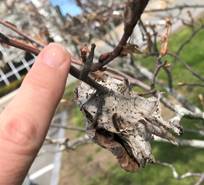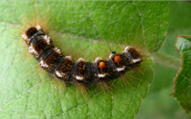How to Limit Risk from Toxic Browntail Moth Hairs
- Sacopee Valley News
- May 1, 2021
- 2 min read
The Maine Center for Disease Control and Prevention (Maine CDC), Maine Forest Service (MFS), and 211 Maine remind residents and visitors that browntail moth caterpillars are emerging from their winter webs in trees. These caterpillars shed tiny hairs that can cause a skin reaction like poison ivy. When the hairs become airborne, they may cause trouble breathing if inhaled.
As many Mainers head outdoors for recreation and yard maintenance, they may be at increased risk of coming into contact with these toxic hairs. Maine Forest Service identified winter webs in all Maine counties in 2021. The greatest risk for exposure to the toxic hairs is between April and July when larger caterpillars are active. The hairs can be in the air and land anywhere, including on trees, gardens, lawns, and decks. The hairs remain toxic in the environment for up to three years. Activities such as mowing, raking, and sweeping can stir up the hairs.
Most individuals affected by the hairs develop a rash that lasts for a few hours up to several days. In more sensitive individuals, the rash can be severe and last for weeks. Inhaling the hairs may cause respiratory distress in some people. The rash and difficulty breathing result from both the toxin in the hairs and barbs on the hairs that cause them to become embedded in the skin and airways.
There is no specific treatment for the rash or breathing problems caused by exposure to browntail moth hairs. Treatment focuses on relieving symptoms and eliminating ongoing exposure.
Browntail moth caterpillars are easy to identify. They are dark brown with white stripes along the sides and two red-orange dots on the back. Younger caterpillars lack these white stripes.
Steps to protect yourself from browntail moth hairs
Avoid places infested by caterpillars.
When performing activities outdoors that may stir up caterpillar hairs:
Aim for damp days or spray vegetation down with a hose. The moisture helps keep the hairs from becoming airborne while working.
Cover face with respirator and goggles.
Tightly secure clothing around the neck, wrists, and ankles.
Take cool showers and change clothes after outdoor activities in infested areas.
Dry laundry inside to avoid hairs embedding into clothing.
For more information:
Contact 211 Maine for answers to frequently asked questions on browntail moths:
Dial 211 (or 207-874-2211)
Text your ZIP code to 898-211





